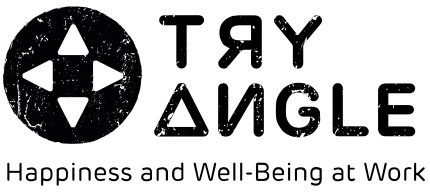4 Day Week Global and Tryangle are joining forces to help companies and employees work differently, with improved work-life balance and wellbeing and without compromising business results. Companies in Belgium can sign up until October 31st 2024 to embark on a coordinated, six-month trial of a shorter work week as the equivalent of a full-time position.
For everywone who is curious, enthousiastic or interested to participate, we have listed a number of Frequently Asked Questions, so you can get all the answers you need.
What if our team is already maximising their productivity?
How are billable hours handled in a 4 day week?
Have you had any businesses yet who have tried it and then gone back?
How do public holidays work in this context?
How can we convince our management team?
How does this work for part-time staff?
How do you address young workers’ reservations about the 4-day week?
What are pain points companies encounter during trials?
How are businesses measuring productivity?
Is a 32 hour work week the only option?
What if our team is already maximising their productivity?
Studies show that the average worker actually loses 2-3 hours each day to unnecessary meetings, poor technology implementations, and just plain old distractions.
While it is possible that your team is as efficient as it could possibly be, we find that there’s always room for improvement. Almost all companies that move to a four-day week do three big things: radically shorten and reform meetings; use technology more thoughtfully and mindfully; and redesign the workday to build in distinct periods for focused work, meetings, and social time.
Lots of employees worry that they are already overstretched – however this is not about doing the same work in the same way in four days rather than five. It is instead about figuring out how to produce the same output with fewer or more efficient inputs. Once they recognize the difference between being busy and productive, that they are being enabled to prioritize and focus, that they are being given agency to identify efficiencies and redesign their workday – the vast majority of the initial sceptics become converts by the end of the trial.
How are billable hours handled in a 4 day week?
Many companies can make the shift without changing their billing systems, as the percentage of time spent on meetings and other overhead / administrative work goes down, and billable work goes up.
For example, Leena Yousefi, founder of Vancouver family law firm YLaw, reported after moving to a 4-day week:
– I was encouraging our lawyers to try and achieve the same targets they did when they worked 5 days a week, but I was astonished when I looked at the data. Our lawyers billed an average of 13% more working 4 days a week versus 5 days a week!
– My target was to be OK with a reduction of 5%, but we got an increase of 13% in billable targets! Reasons I can think of for this are: We are not exhausted so we work harder and are more productive; Almost no one wants to go back to 5 day work weeks so we want to make this a success; We are more focused and do not procrastinate on the days we work;
– She also has a long discussion of the tradeoffs between lower net profits vs better retention, less time spent on recruitment, and ability to expand more quickly that’s worth a read.
Some firms do adopt project or value-based billing before shifting to a 4-day week. And a few find that after adopting a 4-day week, the percentage of their value-based business grows. After moving to a 4.5-day week in 2019, Danish construction law firm Molt Wengel has seen its fixed-fee work grow to about 25-30% of their revenues, and occupy several full-time staff.
Have you had any businesses yet who have tried it and then gone back?
Generally, once companies reach the point where they are comfortable to launch a trial, they succeed and end up making the policy permanent.
Some fail at the planning stage because the C-suite overthink it and feel they need to come up with every solution. A few conclude that don’t have the right culture (four-day weeks can complement strong positive organizational cultures with trust and a partnership approach between leaders, managers, and employees – four-day weeks won’t fix bad company cultures).
More commonly, the 4-day week doesn’t die, but is killed. If it was the signature program of a now-departed CEO, it’s an easy target for their successor, especially if the company faces economic headwinds. In other cases, it’s ended after a round of layoffs (hard to justify letting some people work 4 days when others are let go), after a private equity takeover or VC investment, or a downturn in business.
How do public holidays work in this context?
This is at the discretion of each business. Some make bank holidays or national holidays their day off, regardless of what day in the week it happens, while others deal with them as they would when staff are working five days.
If you have the sense that (especially early in your trial) having a 3-day week would compress work too much, or create a slip in schedules that would be hard to make up, then close on the holiday (say, Wednesday) and reopen on the day you’ve been taking off (say, Friday).
The most important thing is to create a policy that’s clear, and that appeals to people’s sense of fairness and self-interest. No one is going to want the trial to fail so they can have a three-day week right now, and especially if the understanding is that this is a policy that the company might revisit in the future, people should be good with trading days.
I’ve put this question to a few companies that have been doing 4-day weeks for a few years, and for them it seems to be a non-issue. What that suggests is that once the company has been doing it for a while and the 4-day week is your normal, the occasional 3-day week won’t stress the system.
How can we convince our management team?
Some leaders don’t need to be convinced that a four-day week is possible, they need to be convinced that a four-day week is possible at their company. You can approach this in a couple of ways:
- A shorter week would help the company solve some key challenges. Most firms get interested in a shorter week because they face issues with recruitment or retention, maintaining work-life balance, avoiding founder burnout, or they have some other pressing problem. If there’s something like that that’s at the top of the leadership’s agenda, explaining how the four-day week can help address it will clarify how it helps the company.
- Assemble local data indicating the viability of a four-day week. For example, in one place, a team assembled data on the number of person-hours spent in meetings to give a sense of how much time could be reclaimed by making meetings shorter and more pointed. In another, they looked at the productivity of people in a part time program in which they worked 80%, who turned out to be doing almost 100% of their old jobs, but who were at risk of quitting because their contributions often weren’t recognized, or because of workhome issues.
- Show how you could start. It’s great if you can provide some first steps that the company can take. This might mean identifying one place to hold a first trial – preferably one that’s strategically situated and would generate convincing data about the viability of the fourday week across the company. This would show that you’ve thought a lot about this, and move the conversation from the theoretical to the practical. Moving from discussing the potential merits to negotiating over trial lengths and locations puts the conversation on ground that’s advantageous to you.
- A shorter workweek would be an expression of company values, or help the company live its values.
- If all else fails, explicitly ask, “What data would change your mind?” Adam Grant recommends this when you have a stubborn disagreement: get the other person to explain what data would be convincing enough to move them away from their current position. This has the virtue of helping your boss get clarity about what they really would consider solid evidence, and providing you with a clearer route to designing a trial that’ll be convincing.
How does this work for part-time staff?
The decision about whether to include part-time workers in a trial, and more generally what to do with part-time work, is one of the more complicated ones a leader faces when designing a 4-day week trial.
First, it can be reasonable to leave part-time workers out of the initial trial, and make a policy for them later. You’re going to spend the trial essentially rewiring your workplace, procedures, daily and weekly rhythms, etc., and this is all going to be complicated enough without coming up with a policy for part-time work. Better to get all that settled, then figure out how part-time workers fit into the new system.
The choice of what to do with– or more accurately, what options to make available to– part-time workers depends on a couple factors. In my experience, it’s not about whether they are or are not working 100%; it’s about the kind of job, and how much skill or autonomy it demands now.
Let’s look at a couple scenarios.
SCENARIO 1 You have people who are working 60% or 80%; this is their only job (for example, they used to be full-time, and moved to 3 days a week because of care duties); and they’re delivering at the same level as your full-time workers (i.e., overperforming relative to their hours). Essentially, they’re already doing a 4-day week. They’ve figured out a bunch of practices that you want everyone to adopt; they’re you’re pioneers.
This is the situation Pursuit Marketing found itself in when it was thinking about moving to a 4-day week: some of their part-timers were hitting the same weekly goals as full-time workers. To the owners, this was proof that a 4-day week was possible for everybody, and that some of their people had already figured out how to do it.
These people have cracked the code, and you want everyone else to absorb what they already know. You don’t want to lose them; in fact, you want them to be leaders. So find out what they want: would they prefer to reduce their hours and have more time? Or would they prefer to go full-time and have more money? (Think of this as a bonus for coming up with performance improvements that are going to save you a bunch of money in the long run, if that makes you feel better.)
SCENARIO 2 You have people who are working 60-80%, and delivering 60-80% as much work. They’re not pioneers, but they also are solid performers, and are doing the work they’re supposed to be doing.
The question to ask is, who is going to be responsible for redesigning these jobs? If they’re doing a job that requires autonomy and independent decision-making or specialized skills, and they’re part-time because of circumstance or preference (for example, a lawyer working 3 days a week because she has young kids or is training for an Ironman triathalon), then they probably need to be involved now in redesigning that job– whether they go full-time, or reduce their hours.
If they’re part-time because their jobs are relatively simple and don’t require a great degree or skill or autonomy, then it’s probably going to be management that has to figure out how they fit in the new system. (If it’s a role where the company write their training, you’re probably going to redesign their job.) In this case, the option of either making a decision about them immediately, or deferring until the trial is over, may be available to you. However, if it’s a situation where not altering their job would be disruptive to workflows or the rest of the team, then you might have to redesign it during the trial.
SCENARIO 3 You have people who are working for you and someone else, doing 10-15 hours in a couple different places.
Odds are these are jobs that you’ll have to redesign, but you’ll have some choice about whether to do that as part of the trial, or leave it for later. If they change, and if those changes contribute to the overall improvement of the the team or department’s performance, that’s an argument for boosting pay or prorating hours. However, if those jobs don’t change, then it becomes a bit trickier. You might consider adjusting pay in the interests of maintaining fairness and team cohesion.
SCENARIO 4 You have contractors who get to set their own working hours and conditions, who work on a project basis and aren’t closely managed.
They’re not included in trials, but be prepared to talk about their rates, and that everyone else isn’t just getting 20% more money for free.
ALL SCENARIOS If people opt for a shorter workweek, come up with a reduced workweek that’s easy to keep track of. You don’t want to reduce by some fraction that forces people to closely track their time: having to think about working 25 hours 36 minutes (which is 80% of a 32-hour week) rather than 3 days is unnecessarily complex. If that means the hours reduced and reduction in pay don’t exactly match, treat that as premium you’re paying to make your life as a manager simpler.
How do you address young workers’ reservations about the 4-day week?
At an event in late 2022, Hutch CEO Shaun Rutland posed an interesting question: What do you do with new hires and younger workers who are concerned that working a 4-day week will stunt their careers?
They see their friends working long hours, they’ve grown up with a vision that the first few years of their career are supposed to be a rocket ship / bootcamp where they drink from the firehose etc..
As a result, their first reaction may be that the 4-day week will be great for quality of life but will slow them down professionally.
Some potential responses:
- Very long weeks are less conducive to learning than we assume. It’s hard to learn (or remember) a lot from late nights and weekends, especially as sleep debt builds up.
- In plenty of workplaces, there’s an important performative element to long hours: they’re a way to show that you love your job more than your peers, catch the eye of management, or just increase the odds that you’ll be in the right place at the right time when a cool new project (or emergency) comes up. However, in an environment that rewards shorter rather than longer hours, and sees being able to work more effectively and efficiently as more worthy of notice than working super-long hours, being at the office late no longer offers those kinds of opportunities for advancement.
- A shorter workweek leaves more time for professional development or creative work. You might not be on extra projects, but you have the time (and energy) to pursue a certification, or start an advanced degree, or do other work that’ll increase your worth and professional status.
What are pain points companies encounter during trials?
Culture shock. The first month or two are like moving to a foreign country: you’re dealing with culture shock, the dislocation that comes from having old habits upended. This is quite normal. But as you develop new practices and start to build muscle memory, that starts to fade, and you can focus more on what you’re doing and how to improve.
Meeting discipline. Meetings get shorter, smaller, better-organized, and more purposeful. These are all things everyone knows we should do in every meeting, but few of us do— because they’re actually pretty hard. But getting a handle on meetings is essential for promoting good “muscle memory” for 4-day week companies.
Learning new norms around respecting attention. Asking that “1 quick question” that interrupts / disrupts someone else’s train of thought; using email and slack more sparingly and thoughtfully; and treating everyone’s time as a valuable resource, rather than something to be competed over.
Self-discipline during focused time. Working a shorter week requires being more mindful and focused about when and how you work, and being more disciplined when you’re working— challenging our instinct and habit to work ever-longer hours, not fewer.
Building and maintaining boundaries. The shorter week requires companies to be better at enforcing boundaries around time and work— something that we’re not used to, and have to learn to do well.
Switching off. For people who are accustomed to working a lot, and describe themselves as passionate about their work, switching off— giving yourself permission to do so, and actually learning how to do so— can take a little time to figure out.
The sneaking suspicion you’re doing something wrong. For the first month or so, people report feeling like they should still be logging in on Fridays, or taking work home. The lizard brain thinks you should still be working even when your rational mind knows it’s okay to be resting and recovering.
Cognitive dissonance re: time and performance. We’re trained to see long hours as a sign of passion and tool for professional advancement; flipping that script and instead measuring yourself according to how intensively you work and effectively you use your time, isn’t easy.
Unclear rules for success. Having unclear measures of success can kill a trial, and set people up for disappointment if the company has to go back to a 5-day week. The more people can assess their performance in real time, and the clearer the standards for success, the better.
Worries about clients. Every company worries that clients will rebel against the shorter workweek, but if it’s explained well to clients, they can be some of your biggest supporters.
How are businesses measuring productivity?
Every organization already has standards or benchmarks that they use to measure how well they’re doing. They can be as simple as keeping an eye on deadlines and revenues, or as detailed as the number of seconds people are on sales calls. It varies immensely by job function, company, and industry. Unless your aim is to use the four-day week to transform how you understand performance in your organization, it’s usually most convenient to use those same standards. Further, employees are already used to gauging their work by some familiar metric. They’ll know how to interpret those numbers during a trial. Implementing a new system is likely to bring confusion, or to divert energy to gaming the new system.
Finally, think about why you’re trialing a four-day week, and what benefit you hope to get from it, and how you can measure that. If you’re trying to boost recruitment and retention, or create better work-life balance, then you should focus your attention on how the trial affects those things, rather than come up with new measures of output.
Trials can be challenging and stressful for people, and can go off the rails if people feel stressed and uncomfortable, even if they’re getting the work done. So it’s also good to keep a close eye (maybe closer than usual) on how people are feeling, and how they’re feeling about the trial itself. In larger offices, this might mean using a weekly sentiment measuring system like NPS scores or OfficeVibe and keeping an eye on weekly revenues or other critical numbers.
Studies show that the average worker actually loses 2-3 hours each day to unnecessary meetings, poor technology implementations, and just plain old distractions.
While it is possible that your team is as efficient as it could possibly be, we find that there’s always room for improvement. Almost all companies that move to a four-day week do three big things: radically shorten and reform meetings; use technology more thoughtfully and mindfully; and redesign the workday to build in distinct periods for focused work, meetings, and social time.
Lots of employees worry that they are already overstretched – however this is not about doing the same work in the same way in four days rather than five. It is instead about figuring out how to produce the same output with fewer or more efficient inputs. Once they recognize the difference between being busy and productive, that they are being enabled to prioritize and focus, that they are being given agency to identify efficiencies and redesign their workday – the vast majority of the initial sceptics become converts by the end of the trial.
Is a 32-hour work week the only option?
What this pilot will look like as well as its exact modalities depends entirely on the organisation’s choices.
Indeed, the most common design is the 32h work week as the equivalent of a full-time 40h work week, on which the 4 Day Week Global principle of 100-80-100 is based (100% pay, 80% hours, 100% output). Even within this 32h set-up, a lot of variations are possible in what this specifically means for day-to-day operations. Different options are possible, such as a specific closing day per week, a day off that can be freely chosen by all employees, two half-days or other arrangements within the team to ensure continuity of service. In addition, organisations can of course try out other options such as a 34h or 36h working week. Our experts are ready to guide you in this choice.
Want to get started with a real four-day work week in your company?
Are you a Belgian organisation and interested in the 4 Day Week Global Pilot programme?






